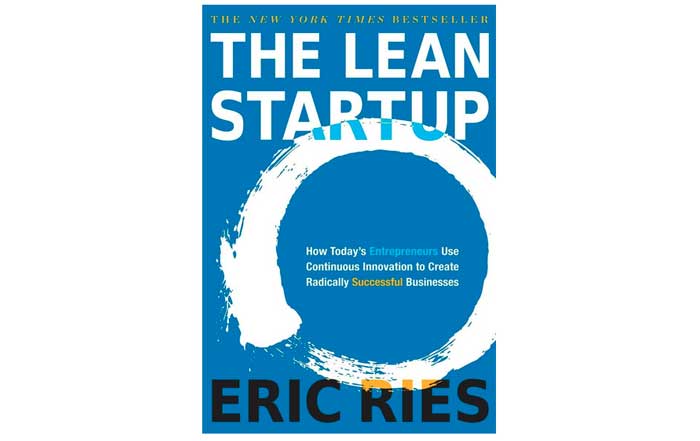The global workforce continues to evolve rapidly, influenced by automation, artificial intelligence, digital transformation, and a collective demand for improved work-life balance. The long-standing culture of extended working hours is gradually giving way to flexible, health-conscious, and productivity-driven employment models. Across continents, governments and private organizations are rethinking the traditional definition of “full-time work,” as evidence increasingly shows that shorter working hours and longer holidays do not necessarily reduce productivity — in fact, they often enhance it. This evolution reflects not only shifts in professional priorities but also a deeper understanding of human well-being and sustainable economic growth.
The professions that offer shorter working hours and longer holidays in 2025 vary widely by country, sector, and corporate culture. While some industries such as academia, creative design, and public administration have long been known for their balanced schedules, emerging trends in technology, sustainability, and remote work have introduced new possibilities for flexible employment. As tradeprofession.com explores the changing global professional landscape, it becomes evident that the modern workforce is entering an age of choice — where freedom, fulfillment, and financial security coexist.
To understand this transformation, it is essential to look at the global context of reduced-hour professions, explore why certain careers maintain shorter schedules, and assess how such work patterns impact productivity, innovation, and overall quality of life.
Learn more about global economic changes and labor market trends on TradeProfession Economy.
The Global Shift Toward Reduced Working Hours
The movement toward shorter working weeks is not new, but it has gained substantial momentum since the pandemic. Countries like Iceland, Sweden, and New Zealand have led successful trials of four-day workweeks, reporting higher productivity, better mental health, and reduced absenteeism. In Japan, where the overwork culture was once infamous, several corporations such as Microsoft Japan implemented shorter work experiments, leading to a 40% productivity boost.
In contrast, countries like the United States and United Kingdom have traditionally maintained longer working hours but are now witnessing increased adoption of hybrid and flexible work schedules. The combination of remote work technology and new management practices has allowed professionals to achieve more in less time, shifting the focus from “hours worked” to “results achieved.”
Organizations including OECD and World Economic Forum emphasize that the future of work will depend less on rigid office hours and more on value creation and innovation. Learn more about how innovation shapes modern business models.
🌍 Global Professions Explorer: Work-Life Balance 2025
Click on any profession category to explore working hours, holidays, and regional insights
📚 Academic & Education
Flexible schedules with extended breaks
🎨 Creative & Design
Project-based autonomy and flexibility
💻 Technology & AI
Results-driven with remote options
🏛️ Public Service
Structured hours with generous leave
⚕️ Healthcare Specialists
Balanced consultancy roles
✈️ Aviation & Maritime
Cyclical work with extended rest
📚 Academic & Education Professionals
Working Hours
Flexible schedules aligned with academic calendars, typically 30-35 hours/week during term
Holiday Time
Extended summer and winter breaks, plus sabbaticals for research (up to several months)
Best Regions
Finland, Norway, Netherlands - renowned for work-life balance in academia
🎨 Creative & Design Professionals
Working Hours
Project-based cycles with flexible scheduling, often self-directed
Holiday Time
"Inspiration breaks" for travel and creative recharge between projects
Best Regions
Portugal, Thailand, Estonia - popular digital nomad destinations with visa programs
💻 Technology & AI Engineers
Working Hours
Results-based models with flex-time, often under 35 hours/week with automation
Holiday Time
Unlimited vacation policies common, plus "innovation days" for side projects
Best Companies
Google, Atlassian, Spotify - pioneers in hybrid schedules and flexible work
🏛️ Public Service & Government
Working Hours
Structured 35-37 hours/week with predictable schedules
Holiday Time
5-8 weeks annual leave plus flexible retirement and parental leave policies
Best Regions
France, Norway, Germany - leaders in public sector work-life balance
⚕️ Healthcare Specialists
Working Hours
Structured daytime hours for consultants and researchers, work-hour limits mandated
Holiday Time
Extended annual leave with legal protections for rest and recuperation
Best Regions
France, Germany - strict working thresholds protect healthcare staff well-being
✈️ Aviation & Maritime
Working Hours
Concentrated time blocks with mandatory rest between shifts
Holiday Time
Extended leave rotations - multiple rest days or months off between operational periods
Top Employers
Emirates, Singapore Airlines, Qantas - offer excellent rest-to-work ratios
Understanding the Professions Leading the Change
Certain professions naturally align with shorter working hours and longer holidays due to the nature of their responsibilities, unionized protections, or institutional norms. These roles often combine creativity, intellectual engagement, and structured project cycles, enabling flexible time management without compromising output.
Academic and Educational Professions
Academia remains one of the most prominent fields offering reduced working hours and extended holiday periods. University professors, lecturers, and researchers often enjoy flexible schedules, allowing them to balance teaching with personal research pursuits. While workloads can intensify during semesters, extended summer and winter breaks provide recovery and creative reflection time. Academic institutions in Finland, Norway, and Netherlands are widely regarded for promoting work-life balance through structured teaching periods and generous sabbaticals.
The modern education sector has further benefited from digital tools such as Canva, Coursera, and Google Classroom, enabling professors to automate grading and streamline course delivery. Visit TradeProfession Education to explore how technological innovation is reshaping academic professions.
Creative and Design-Based Careers
Creative professionals — including graphic designers, writers, filmmakers, architects, and digital content creators — often operate in flexible timeframes defined by project cycles rather than rigid office hours. The creative economy, powered by global platforms like Adobe Creative Cloud, Fiverr, and Canva, enables freelancers and entrepreneurs to control their schedules while serving clients worldwide.
The growth of digital nomadism and creative freelancing has led to shorter structured working hours but longer holiday flexibility. Many creatives schedule “inspiration breaks” — extended travel or personal downtime — to recharge and develop new ideas. Countries such as Portugal, Thailand, and Estonia have actively embraced remote workers with visa programs that promote sustainable work-leisure lifestyles.
Learn more about business innovation trends driving the gig economy and creative work flexibility.
Healthcare and Specialized Consultancy Professions
While healthcare is typically associated with demanding schedules, certain segments within the sector provide more balanced hours. For instance, medical researchers, physiotherapists, dietitians, and occupational therapists often enjoy structured daytime hours and extended annual leave compared to hospital-based clinicians. Similarly, private consultants and specialists in psychology or wellness industries often choose flexible client appointments, reducing overall weekly working time.
In many European countries, national healthcare systems mandate work-hour limitations to protect staff well-being. In France and Germany, for example, medical professionals cannot legally exceed specific working thresholds, ensuring sufficient rest and recuperation. This balance has proven effective in improving care quality, reducing burnout, and retaining skilled practitioners in the healthcare system.
Learn how the employment landscape evolves as healthcare professionals seek greater work-life harmony.
Public Sector and Government Roles
Public administration and government jobs have long been associated with predictable working hours and generous holiday entitlements. Civil servants, city planners, customs officers, and administrative professionals typically follow structured 35–37 hour workweeks, with guaranteed paid leave extending beyond private-sector averages.
Countries like France, Norway, and Germany lead in providing government employees with extended annual holidays, typically ranging from five to eight weeks. Additionally, flexible retirement plans and parental leave policies further enhance job satisfaction and attract long-term professionals to these careers.
These models have influenced private companies to adopt similar welfare standards, recognizing that employee retention depends on more than financial compensation. Visit TradeProfession Global for more insights into how governments worldwide are reshaping employment frameworks for well-being and inclusivity.
Aviation, Maritime, and Seasonal Professions
Aviation and maritime industries offer unique scheduling advantages. Pilots, air traffic controllers, cruise staff, and shipping officers work in concentrated time blocks followed by mandatory rest periods and extended leave rotations. Due to global safety regulations, these professionals often accumulate significant paid downtime, making aviation and maritime careers appealing to those seeking structured yet flexible lifestyles.
For instance, airline pilots working for Emirates, Singapore Airlines, or Qantas often have multiple rest days between long-haul routes, while maritime engineers can enjoy months of leave between voyages. This cyclical pattern provides substantial opportunities for travel and recreation, balancing intense operational periods with long breaks — a model increasingly adopted in industries requiring 24/7 coverage.
Explore related economic sectors on TradeProfession Stock Exchange and Investment.
Information Technology and Automation Specialists
The rise of AI and automation has significantly altered time expectations in technology-related professions. Developers, data scientists, cybersecurity specialists, and AI engineers increasingly leverage automation to complete complex tasks efficiently, reducing repetitive work and freeing more personal time. Companies such as Google, Atlassian, and Spotify are pioneers in offering shorter workweeks, hybrid schedules, and “innovation days” that encourage employees to pursue side projects or personal learning.
The integration of generative AI tools such as ChatGPT, Midjourney, and GitHub Copilot has accelerated workflows across industries, allowing professionals to maintain high productivity while working fewer hours. Furthermore, the remote-first culture popularized by tech startups promotes asynchronous communication, enabling employees to manage schedules around peak creativity and personal routines.
Learn more about the intersection of artificial intelligence and work-life balance in modern industries.
Regional Insights: Comparing Global Work-Time Patterns
Europe: The Pioneer of Work-Life Balance
Europe remains the global leader in protecting worker rights and promoting leisure time. Countries such as Denmark, Norway, Germany, and France consistently report shorter weekly working hours — averaging 30–35 hours — combined with some of the world’s longest vacation allowances. European Union labor directives mandate at least four weeks of paid annual leave, though many nations exceed this minimum.
In the Netherlands, part-time work is widely accepted across professional sectors, and flexible parental leave has become standard. Meanwhile, Sweden’s progressive labor reforms and state-supported childcare policies have allowed families to optimize their work hours around personal life commitments. This approach reflects a holistic view of labor productivity that prioritizes happiness and social cohesion alongside economic success.
To understand how sustainability influences European business models, visit TradeProfession Sustainable.
North America: Balancing Hustle Culture with Flexibility
In contrast, North America historically embraced longer working weeks — often exceeding 40 hours — but 2025 marks a transitional phase. Many U.S. and Canadian corporations are adopting flexible hours, unlimited vacation policies, and hybrid models to attract and retain top talent. Tech giants like Salesforce, Basecamp, and Shopify now emphasize well-being as part of their employer brand, linking productivity to employee satisfaction rather than attendance.
Canada, in particular, is witnessing legislative shifts toward improved paid leave standards and experimentation with four-day workweeks in provinces such as Ontario and British Columbia. Remote work remains widespread, with employees using digital tools to maintain output while reclaiming personal time.
Learn more about executive management strategies supporting workforce transformation in North America.
Review of Professions with the Shortest Working Hours and Longest Holidays
Asia-Pacific: Redefining Productivity and Cultural Norms
The Asia-Pacific region, once known for its long working hours, is now undergoing a profound cultural transformation. Nations such as Japan, South Korea, and Singapore are actively rethinking traditional labor expectations. Following decades of overwork, known in Japan as karōshi, both government and private sectors have begun to prioritize employee welfare, flexible hours, and mental health initiatives.
Companies like Panasonic, Hitachi, and Fujitsu have implemented hybrid schedules and shortened workweeks, encouraging employees to take more vacation days. In South Korea, where average annual working hours once exceeded 2,000, the national government introduced reforms to promote leisure time and cap weekly hours at 52.
Australia and New Zealand represent another paradigm of balance, where the concept of “work to live” rather than “live to work” has deep societal roots. Australian public employees typically enjoy generous paid leave, including annual and parental holidays, while many private corporations offer additional wellness days or long-service leave benefits. The New Zealand government, inspired by the success of Perpetual Guardian’s four-day week experiment, continues to advocate for reduced-hour models as a way to sustain innovation and well-being simultaneously.
Explore how evolving employment structures across Asia-Pacific are reshaping global competitiveness.
Middle East and Africa: Emerging Awareness of Work-Life Integration
In the Middle East, the drive for diversification away from oil-dependent economies has led to modernization of workplace policies. United Arab Emirates became one of the first nations in the region to adopt a 4.5-day workweek, aligning more closely with global markets and giving workers extended weekends. This reform, introduced in 2022 and expanded in 2024, has been celebrated as a progressive step toward better living standards and international alignment.
Similarly, Saudi Arabia’s Vision 2030 reforms and Qatar’s post–World Cup modernization plans have influenced both public and private enterprises to adopt modern HR frameworks emphasizing flexibility, inclusion, and family time.
In Africa, countries such as South Africa and Kenya are following suit, with emerging urban sectors emphasizing shorter hours and creative hybrid roles. Tech startups in Cape Town and Nairobi now mirror Silicon Valley’s flexible ethos, offering generous leave, results-based work, and global remote opportunities. This trend aligns with Africa’s broader economic ambition to attract international digital talent.
Learn how global leaders in technology and innovation are influencing employment models across developing regions.
South America: Balancing Leisure and Productivity
South America continues to lead in integrating cultural warmth with workplace flexibility. Brazil, Argentina, and Chile exemplify societies where family, social life, and recreation hold high importance in employment culture. Workers in Brazil enjoy an average of 30 vacation days per year, in addition to public holidays and labor protections enshrined by law.
In 2025, Chile implemented new legislation to reduce the standard workweek from 45 to 40 hours, one of the most significant reforms in the region. This aligns with its growing commitment to employee welfare, productivity, and inclusion in global labor standards. The success of these reforms has inspired other Latin American nations to consider similar policies.
Multinational companies such as Unilever, Natura & Co, and Banco do Brasil have embraced hybrid models to attract top professionals who value freedom and quality of life over rigid routines.
Learn more about global business trends shaping international labor practices.
Professions That Stand Out in 2025
Education and Research Professionals
Teachers, researchers, and education consultants remain among those with the shortest working hours and longest holidays. Their work cycles align with academic calendars, allowing structured breaks during midyear and year-end periods. In addition, tenured professors and education policy professionals enjoy sabbaticals that can last several months, fostering intellectual rejuvenation and research continuity.
In regions such as Scandinavia and Western Europe, the teaching profession is particularly rewarding in terms of work-life equilibrium. Educators often benefit from union-negotiated agreements that guarantee extended paid leave and professional development time. Educational organizations increasingly encourage blended learning systems, enabling staff to design flexible schedules around virtual classrooms and research activities.
Visit TradeProfession Education to learn how the academic world continues to pioneer balanced professional lifestyles.
Creative Professionals and Media Specialists
Creative sectors continue to define the boundaries of modern flexibility. Artists, journalists, musicians, film producers, and advertising professionals operate within project-based cycles, affording them significant autonomy over their hours and vacation schedules. The rise of digital platforms like YouTube, Substack, Patreon, and TikTok has allowed creators to monetize content directly, often requiring fewer structured hours than traditional employment.
Design and media companies now emphasize creative rest as part of innovation policy. Firms such as Wieden+Kennedy, Ogilvy, and BBC Studios have integrated wellness leave, flexible production schedules, and hybrid teams across continents. The emphasis is no longer on time spent but on the originality and impact of the work produced.
Learn how global media and marketing trends redefine time efficiency through TradeProfession Marketing.
Financial Analysts, Economists, and Consultants
Finance remains a field traditionally associated with demanding hours, yet a growing segment of financial professionals — particularly analysts, researchers, and sustainability consultants — now enjoy structured workweeks and generous leave benefits. Remote financial consultancy, powered by analytics software such as Bloomberg Terminal, FactSet, and Morningstar Direct, allows professionals to conduct high-value work from anywhere, reducing commuting and redundant meetings.
Firms in Switzerland, Germany, and Singapore have begun integrating flexible hours into corporate finance roles, particularly in sustainable investing and fintech consulting. As automation handles repetitive calculations and compliance documentation, finance professionals can focus on strategic tasks while maintaining healthier schedules.
Explore more about finance and investment opportunities on TradeProfession Banking and Investment.
Tech Developers and AI Engineers
Technology remains one of the most dynamic professions redefining how working hours are structured. AI engineers, blockchain developers, and cybersecurity experts frequently work on results-based models rather than strict hours. These high-demand roles offer substantial flexibility and vacation benefits, as organizations prioritize innovation over attendance.
Companies like Google, Meta, and NVIDIA have normalized “flex-time,” enabling employees to design personal work rhythms aligned with creativity and performance. In the blockchain industry, remote-first organizations such as Ethereum Foundation and Chainlink Labs emphasize autonomy and asynchronous collaboration, allowing global teams to operate effectively across time zones.
The result is a new culture of “digital freedom,” where professionals measure success by output quality and technological progress, not by presence. For deeper insights into how technology redefines professional structures, visit TradeProfession Artificial Intelligence.
Public Service and International Development
Public servants, policy specialists, and diplomats often enjoy some of the world’s most structured and generous holiday entitlements. International development organizations such as the United Nations, World Bank, and OECD maintain strict work-hour limits and global rotation schedules that include mandatory rest periods.
In 2025, development professionals working in humanitarian and climate sectors are increasingly adopting hybrid arrangements. This ensures staff safety, mental health, and family cohesion, while maintaining the efficiency of large-scale operations. Governments in Europe, the UK, and Canada have expanded public leave entitlements to attract a new generation of professionals interested in policy reform and social impact.
Visit TradeProfession Economy to explore how global policy work intersects with lifestyle balance.
The Economic and Social Value of Shorter Working Hours
Productivity and Innovation
Numerous studies across continents affirm that reducing working hours often leads to improved productivity, creativity, and engagement. Organizations that adopt flexible models report lower turnover rates and higher innovation outputs. This is largely due to employees experiencing lower stress, better sleep, and higher motivation.
The four-day workweek experiments in Iceland, Spain, and Australia demonstrated measurable gains in output without revenue loss. Similarly, in corporate environments, employees with extended holidays report significantly improved focus upon return. The psychology of work satisfaction has evolved — rest is now viewed as a productivity driver, not an interruption.
Learn more about modern business innovation models supporting sustainable growth.
Economic Resilience and Employment Equality
Shorter working hours contribute to more equitable employment distribution by enabling job-sharing and part-time opportunities. In economies with high automation penetration, work reduction policies prevent job displacement by redistributing available tasks among more workers. The European Commission and OECD highlight that countries adopting flexible-hour legislation experience lower unemployment and higher workforce participation among women and older citizens.
This model enhances both inclusivity and economic resilience. Moreover, flexible professions are more resistant to economic shocks, as distributed teams maintain productivity during crises such as pandemics or supply chain disruptions.
For detailed analyses on evolving employment models, visit TradeProfession Jobs and Employment.
Sustainability and Human Well-Being
The link between sustainable business and humane working conditions has become central to the corporate ethos. Shorter working hours contribute to environmental sustainability by reducing commuting, office energy use, and overproduction. Moreover, longer holidays stimulate domestic tourism and cultural participation, redistributing economic benefits across communities.
The new sustainability framework adopted by many companies integrates “time sustainability” — acknowledging that protecting employee well-being is as vital as reducing carbon footprints. This is especially evident among global corporations aligned with UN Sustainable Development Goal 8, promoting decent work and economic growth.
Learn how sustainable strategies align with the future of work on TradeProfession Sustainable.
Looking Ahead: The Future of Work in a Post-Industrial Era
By 2030, the concept of full-time employment may no longer rely on the traditional 40-hour benchmark. Advances in artificial intelligence, quantum computing, and global connectivity will continue to blur the line between work and personal time, giving rise to outcome-oriented professional ecosystems.
Freelancing, fractional employment, and self-directed learning will redefine what it means to have a career. The most sought-after professions will be those offering autonomy, creativity, and purpose — values once seen as luxuries, now recognized as economic necessities. Governments, corporations, and educational institutions will increasingly collaborate to standardize shorter working hours while maintaining competitive pay scales and benefits.
The future, as envisioned by forward-thinking organizations, is one of balance — where technology amplifies human potential rather than exhausts it, and where rest is valued as a catalyst for creation.
Visit TradeProfession News and Global for continuing updates on workforce evolution worldwide.
Conclusion: Toward a More Human-Centered Economy
The professions with the shortest working hours and longest holidays reflect an undeniable truth — productivity and well-being are not opposites, but complementary forces. The movement toward reduced-hour careers is not just a labor trend; it is an ethical and economic transformation redefining how societies value time, creativity, and human connection.
In 2025, as the world continues to embrace technological automation and sustainable development, the most forward-looking companies and countries understand that the future of work must serve the human spirit as much as the economy. Those who achieve this balance — through flexibility, fairness, and foresight — will set the foundation for a truly prosperous and inclusive global workforce.
To stay informed about how professional industries are evolving across the world, visit TradeProfession.com — your source for expert insights on global employment, sustainable business, and the future of innovation.










